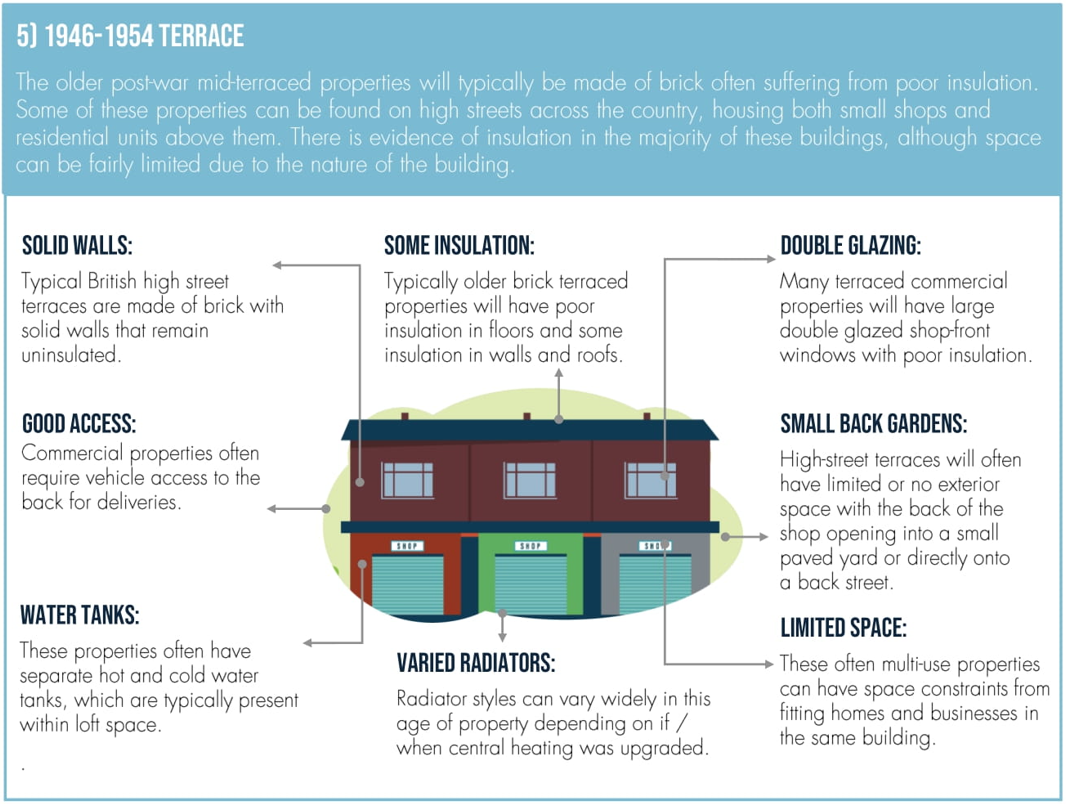-
12 East Street, Whitburn, SR6 7BX
-
0191 406 5300
-
info@highlyefficienthomeplan.com
Heating choice depends on your type of home
THERE IS NO ONE-SIZE-FITS-ALL SOLUTION
DIVERSITY IN BUILDING CHARACTERISTICS AND CONSUMER PREFERENCES REQUIRES A MIX OF HEATING SOLUTIONS
In order to achieve net-zero-carbon in the UK, the majority of existing heating sources will need to be replaced with low-carbon alternatives. However as the UK building stock is one of the oldest in Europe, this is a challenging task.
Electric heating and green gas are the two main low-carbon options being explored by Government for residential heating and most consumers will likely transition to one of these two solutions. In some cases, connection to a district heat network may also be an option, however this will depend on proximity of the building to the communal district network system. Other alternatives, such as biofuel powered heating systems, could be a suitable alternative to current LPG or oil systems.

The fabric and energy efficiency of each building will also impact the suitability of love-carbon heating solutions to different properties:
* Electric heat pumps are a highly efficient solution that due to the space and thermal efficiency requirements are likely to be more suited to homes and buildings with space to locate the equipment and homes that are also well insulated
* Green gas boilers can be installed as a like-for-like replacement of a natural gas boiler and as such are likely to be a good solution (when green gas becomes more readily available) for properties where space-constraints and poor energy efficiency might limit the potential for a heat pump
* District heat networks are an attractive solution to serve multiple buildings in densely populated areas such as cities, where connection costs can be spread across a large number of consumers and particularly in high rise buildings. Some local councils have already started this process
We will need all of these low-carbon technologies, plus a step change in energy efficiency, in order to get to net-zero. Electric heat pumps, green gas and district heat networks are all expected to form part of the mosaic of solutions needed to deliver low-carbon heat.
THE HEATING CHOICE WILL DEPEND ON BUILDING CHARACTERISTICS
Each building in the UK differs by type, size, construction age and thermal efficiency and will require a tailored approach to reducing the emissions from heating. From the potential hundreds of examples possible, we have examined six building types, which illustrate the broad spectrum of variation in building characteristics across the UK and the different combinations of technologies and approaches that may be required.
THERE IS NO TYPICAL UK HOME
The below table shows the latest Government statistics on housing age and type, where data is available across Scotland, Wales and England'. The data set covers nearly 23 million homes and shows us the huge variety that exists. Data on commercial properties is less readily available but there is also huge variety across this building stock.
Housing stock analysis - Scotland, Wales and England (% of total 22,646,450 buildings analysed)

Throughout the different building types, there are various characteristics that need to be considered when assessing green heating solutions. These characteristics will play an important part of consumer journey, as they feed in to determining what will be the most appropriate heating choice. The space constraints both internally and externally as well as lower energy efficiency can add significant challenges to transitioning to heat pumps which typically require more space and higher thermal efficiency2. These characteristics include, but are not limited to:
* Insulation — the presence and type of insulation will have an impact on the energy efficiency of the home
* Glazing — the thickness and material used will determine the thermal efficiency of the properties
* Exterior space — affects what technology can fit outside of the home if required
* Interior space — affects what technology can fit inside the home if required (particularly limited upstairs access via tight stairways)
* Water tanks — affects interior space and the potential heating technology choice
* Size of radiators - affects thermal efficiency, as well as the interior space required
The typical characteristics associated with our six chosen building types are below...






